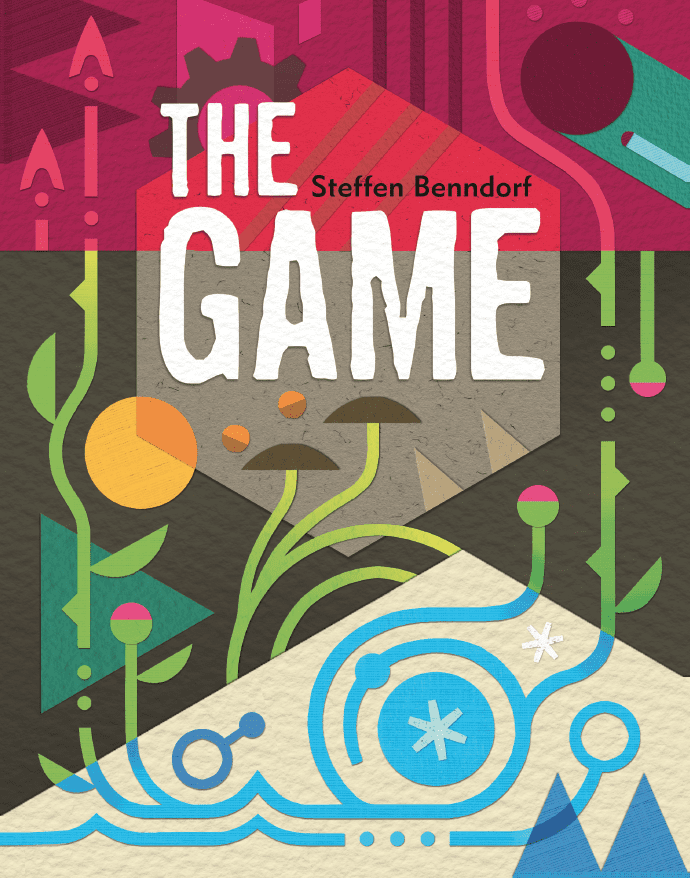How To Play: The Game
Focus on understanding card values, placing them wisely, and adapting strategies. Learn game rules, plan ahead, use distractions, and be flexible. Communicate openly with your team. Share plans, signal moves, adjust, and debrief. Remember to have fun and treasure each game's unique moments!

Welcome, board game enthusiasts! If you’re looking to crush your opponents in your next game, you’re in the right place. This guide offers an outline of the game rules and provides the best strategies for winning. So, grab your dice and let’s get started!
Overview
What’s in the box
- 1 Game Board
- 4 Player Tokens
- 1 Die
- 120 Cards
- 100 Coins
- 50 Gems
- 1 Rulebook
How To Play The Game: Rules Summary
Setup
-
First, spread out the playing area.
-
Next, shuffle the deck of cards.
-
Each player draws a hand of six cards.
-
Place the remainder of the deck in the center as a draw pile.
Gameplay
-
The youngest player goes first.
-
On your turn, you must play at least two cards from your hand onto one of the four piles in the center.
-
Two piles must ascend in order (from 1 to 99). The other two must descend (from 100 to 2).
-
After playing cards, draw back up to six cards from the draw pile.
-
If you can’t (or don’t want to) play two cards, you may surrender.
Winning
-
If all the cards are played correctly, everyone wins together!
-
If you can’t play any cards, your team loses.
Special Rules & Conditions
-
If a player plays a card exactly 10 less than the top card on an ascending pile, they can reverse the order.
-
You can’t communicate about specific numbers in your hand. However, you can discuss general strategy.
-
If the draw pile is empty, you continue playing with the cards in your hand until no one can play anymore.
Best The Game Strategies
Mastering Card Values: Your Key to Victory
Understanding card values is crucial for winning. You need to know what each card can do and use it to your advantage. Here’s how to maximize your efforts:
Know Your Cards
First, learn what each card does. This will help you make better choices. Here are some tips:
- Read the card descriptions carefully.
- Pay attention to the card’s strengths and weaknesses.
- Remember any special abilities.
Strategic Card Placement
Next, place your cards wisely. This can change the game in your favor. Consider these strategies:
- Put high-value cards in key positions.
- Shield your important cards with lower-value ones.
- Use cards that work well together.
Adapting to Your Opponent
Finally, adapt your strategy based on your opponent’s moves. Flexibility is your best friend.
- Watch your opponent closely.
- Adjust your card usage accordingly.
- Predict their future moves.
Mastering Optimal Card Placement
Winning at card games often boils down to strategic placement. Here’s how you can nail it:
Know Your Cards
Learn each card’s strengths and weaknesses. Familiarity helps you make better choices.
Think Ahead
Plan several moves in advance. This way, you anticipate your opponent’s actions.
Use Distractions
Place cards to divert your opponent. Focusing their attention elsewhere can be your secret weapon.
Adapt on the Fly
Flexibility is key. Change your strategy based on the game’s progress.
- Position cards to maximize advantages.
- Avoid obvious patterns.
- React swiftly to opponent’s moves.
With these tips, you can improve your game and keep your friends guessing!
Mastering Team Communication: Your Secret Weapon to Victory
Good communication within your team can turn the tide in any game. Here’s how we do it expertly:
Always Share Your Plans
- Discuss your strategy before making moves.
- Keep everyone informed about your intentions.
- Ask for input from teammates.
Signal Important Moves
- Use non-verbal cues to indicate plans.
- Don’t forget to highlight critical moments.
- Practice your signals beforehand.
Adjust on the Fly
- Stay flexible with your strategy.
- Share observations about opponents.
- Adapt based on new information.
Debrief After Each Game
- Discuss what worked well.
- Identify areas for improvement.
- Learn from each other’s insights.
# Winning Moves: Seal the Deal! 🤩
So there you have it, folks. We laughed, we strategized, and we (hopefully) emerged victorious. Remember, every good plan needs a backup, and every backup needs cheering for when it inevitably saves your game. Share these strategies with your allies, keep your enemies guessing, and never forget the golden rule: have a blast! Until next time, may your dice roll true and your snacks never run out. 🍿🎲
Want to know what we think of The Game? Read our detailed review of The Game here

